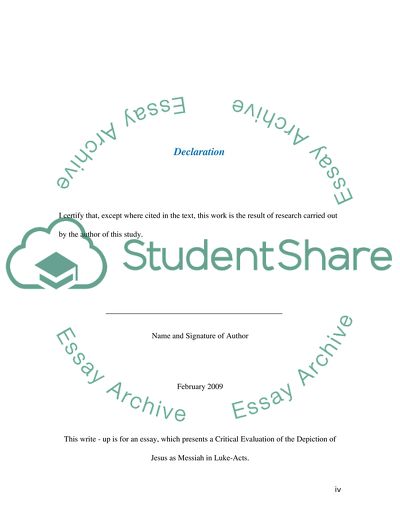Cite this document
(The Depiction of Jesus as Messiah in Luke-Acts Research Paper, n.d.)
The Depiction of Jesus as Messiah in Luke-Acts Research Paper. Retrieved from https://studentshare.org/religion-and-theology/1719908-critically-discuss-and-evaluate-the-depiction-of-jesus-as-messiah-in-luke-acts
The Depiction of Jesus as Messiah in Luke-Acts Research Paper. Retrieved from https://studentshare.org/religion-and-theology/1719908-critically-discuss-and-evaluate-the-depiction-of-jesus-as-messiah-in-luke-acts
(The Depiction of Jesus As Messiah in Luke-Acts Research Paper)
The Depiction of Jesus As Messiah in Luke-Acts Research Paper. https://studentshare.org/religion-and-theology/1719908-critically-discuss-and-evaluate-the-depiction-of-jesus-as-messiah-in-luke-acts.
The Depiction of Jesus As Messiah in Luke-Acts Research Paper. https://studentshare.org/religion-and-theology/1719908-critically-discuss-and-evaluate-the-depiction-of-jesus-as-messiah-in-luke-acts.
“The Depiction of Jesus As Messiah in Luke-Acts Research Paper”, n.d. https://studentshare.org/religion-and-theology/1719908-critically-discuss-and-evaluate-the-depiction-of-jesus-as-messiah-in-luke-acts.


